
Blue-winged Olives
Baetis
Tiny Baetis mayflies are perhaps the most commonly encountered and imitated by anglers on all American trout streams due to their great abundance, widespread distribution, and trout-friendly emergence habits.

Cultus tostonus (Springfly) Stonefly Nymph Pictures
This specimen keys pretty well to Cultus. Key characteristics observed under the microscope but not necessarily apparent on my photo are the lack of submental gills (or any gills at all), the lack of short, stout setae on the occiput or anterolateral prothoracic margins, and the lack of a low knob below the subapical tooth on the lacinia. Species known to be found in Washington are Cultus pilatus and Cultus tostonus. It clearly does not fit the description by Frison (1942) of Diploperla pilata, as Cultus pilatus was first named. I cannot find a detailed description of the nymph of tostonus, but Ricker 1952 describes a defining character of the adults, "Head mostly yellow, the only important dark marking being the bands which join the anterior to the lateral ocelli ; median pronotal stripe, at its middle, about one-fifth of the width of the pronotum." The nymph shows a very dark pattern fitting that description on the head (likely retained into adulthood) and the pronotal stripe is about the right width, too. Given that visual description, the range, and the poor fit to pilatus, I'm calling this Cultus tostonus.
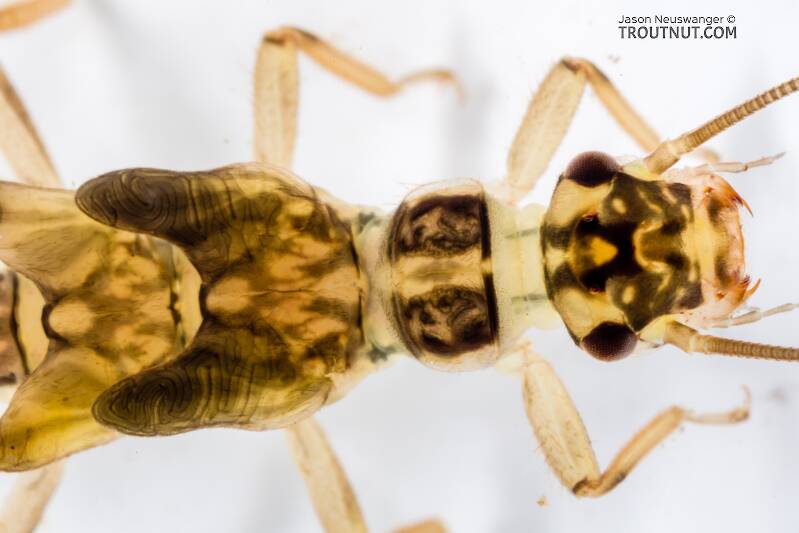
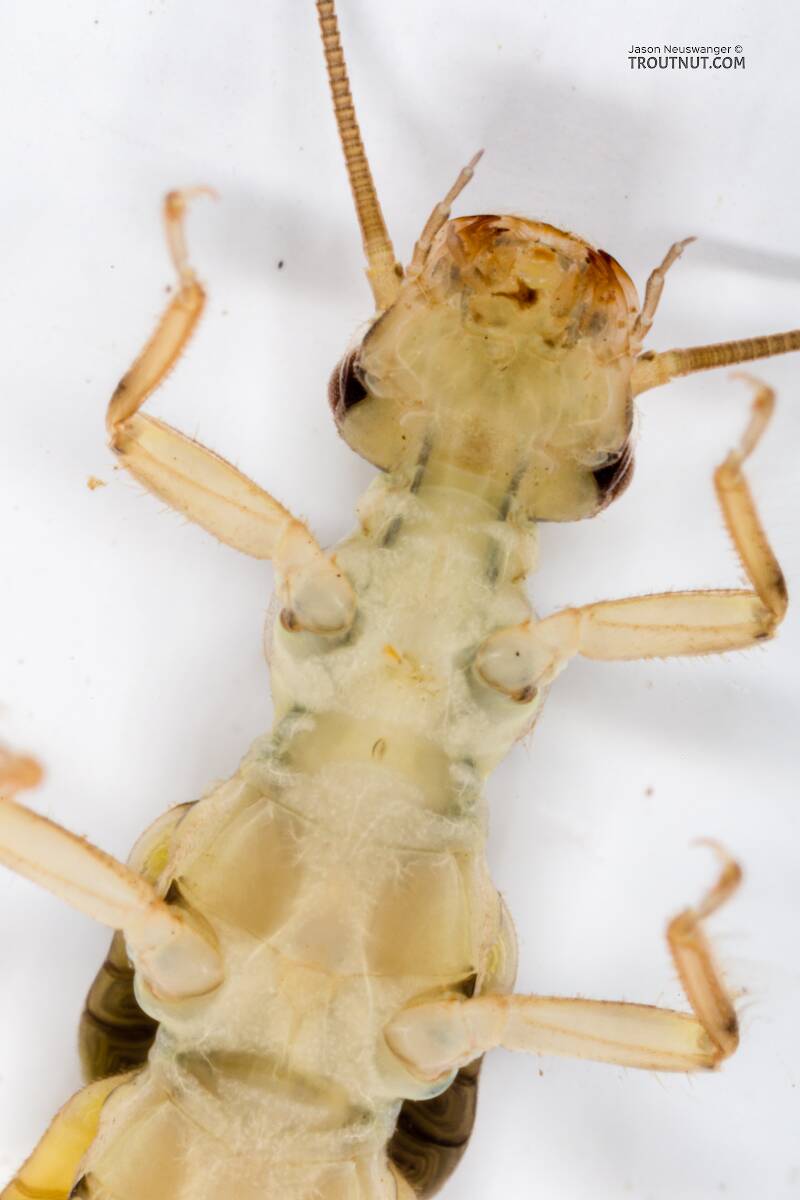
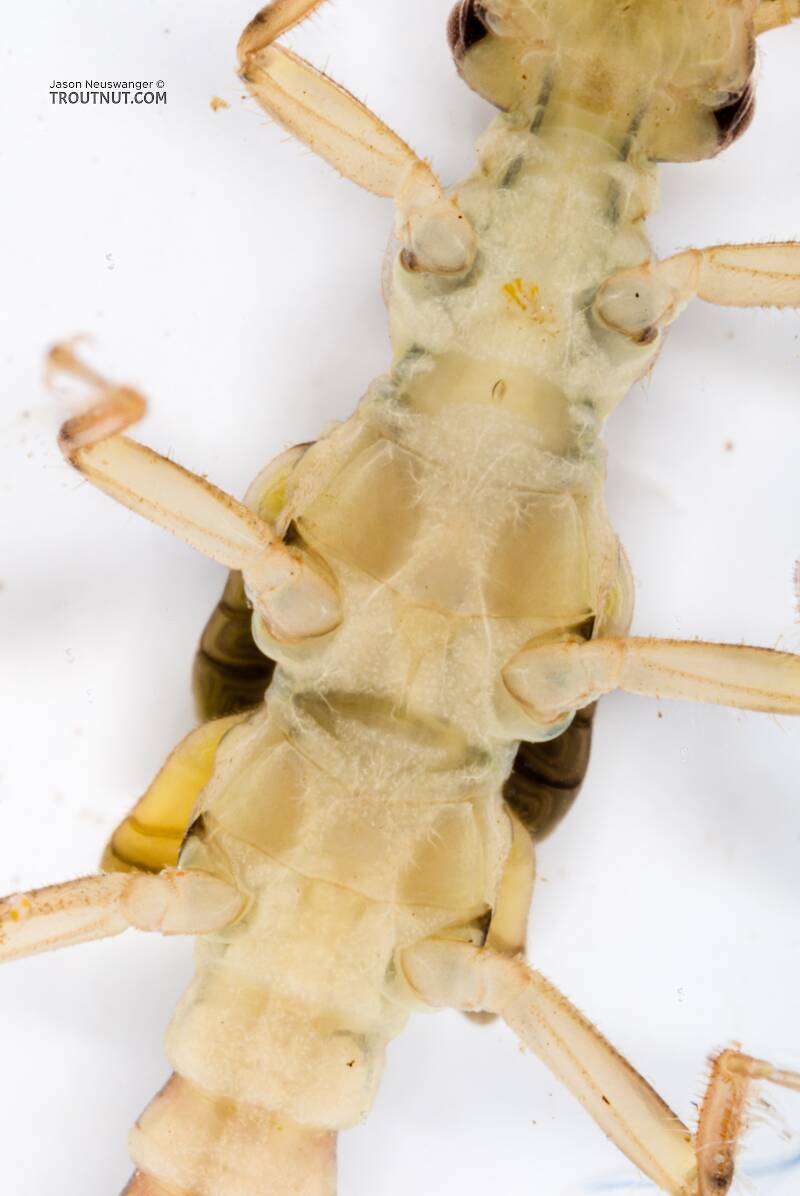
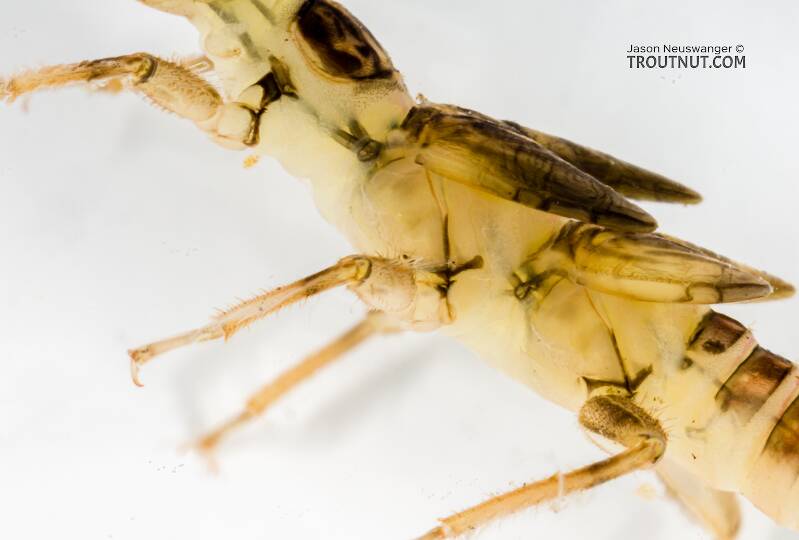
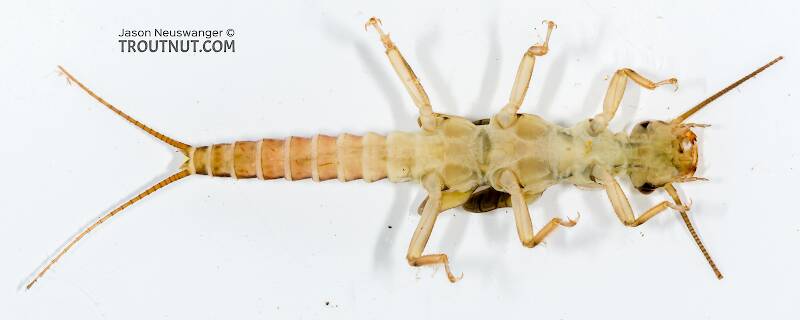
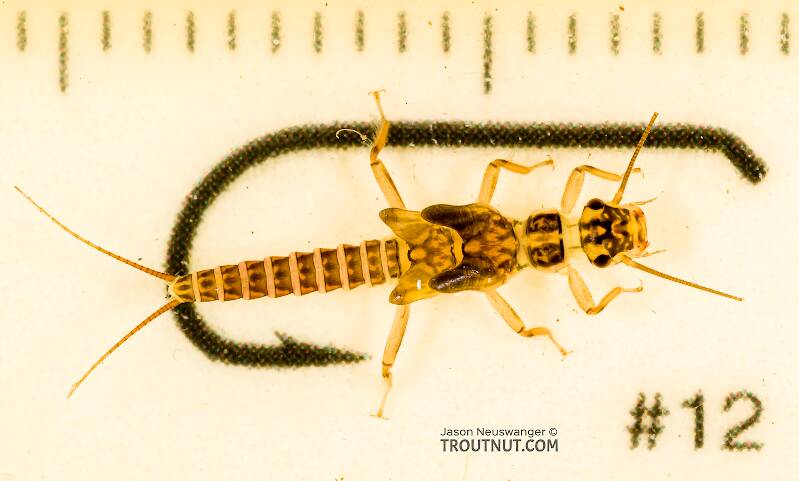
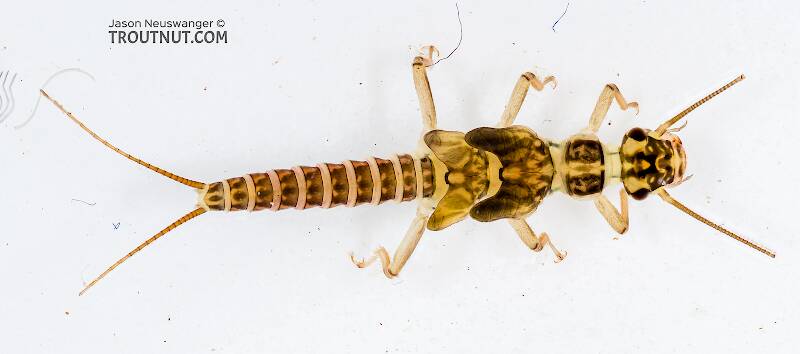
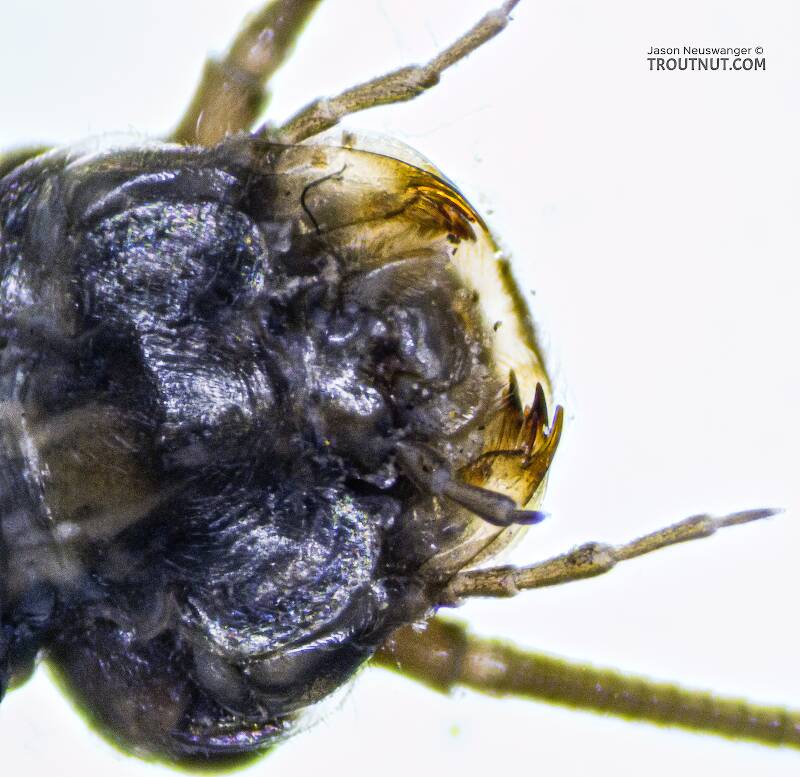
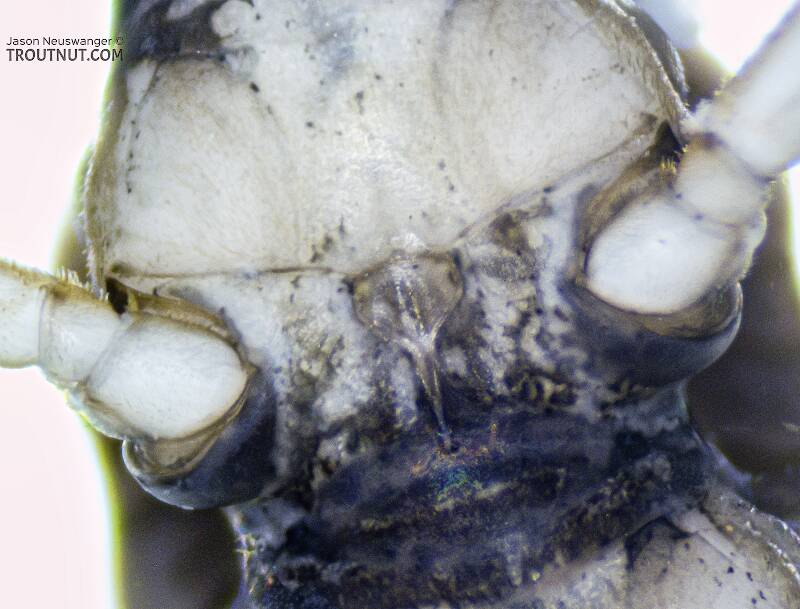
This stonefly was collected from the Cedar River in Washington on July 2nd, 2021 and added to Troutnut.com by Troutnut on July 4th, 2021.
Start a Discussion of Nymph
Cultus tostonus (Springfly) Stonefly Nymph Pictures
Collection details
Date: July 2nd, 2021
Added to site: July 4th, 2021
Author: Troutnut


